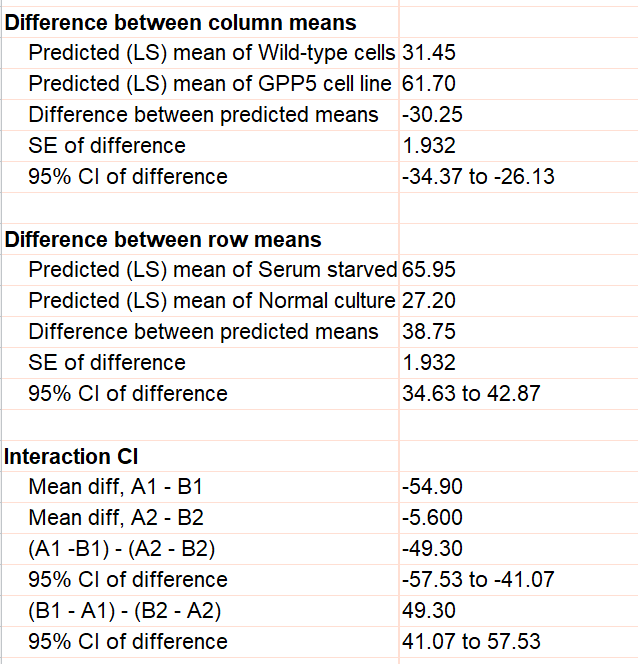
We will also assume they have equal standard deviations and we will choose yes to the next option. The second question you need to ask, "Are your data Gaussianly distributed?" We've already done a normality test on these data and we know that they are Gaussianly distributed. The data used here, albeit fictitious, are not matching or pairing, so I'm going to click on the no matching or pairing. You need to ensure that if you have a repeated measures study that each subject appears in their own row. If, for instance, Subject One appears in row one in Group A, row two in Group B and back in row one in Group C, the analysis will not be correct. By doing this, however, you need to ensure that your data are entered correctly. Each row represents matched or repeated measures data. When the parameters window appears, a question you need to ask yourself is, "How was my experiment designed? Was there matching or pairing?" If so, you need to choose the second option. These types depend upon the experimental design that's been undertaken. There are essentially two different types of one-way ANOVA. Once you've selected your data sets, click okay. You can deselect all data set or select all data set from this window or simply select the data sets you're interested in analyzing individually. In this occasion we only have three data sets and they're the data sets we're concerned with, so we've selected everything. It is not unusual to include multiple data sets on a single Prism table. Once you've selected one-way ANOVA, you move to the right side of the screen and make sure your data sets have been selected. We wish to do a column analysis and we wish to do a one-way ANOVA, as shown on the screen.

This allows you to select which analysis you wish to carry out on your data. For the purposes of this walkthrough, we're going to click on analyze from the table view.Īs soon as you click on analyze, it brings in the analyze data menu box.

You can do it from your table view by clicking on analyze from the menu or you can click on new analysis from within the results section. You can do that from within the graph view by clicking on analyze in the menu. In order to do an ANOVA, you need to select your data set and click on the analyze button. We wish to undertake a one-way ANOVA to compare these three groups. You can immediately see that Control and Drug A look quite similar, whereas Drug B numerically appears to have a higher output. Here we can see graphical presentation of our experiment, Control in blue, Drug A in red and Drug B in green. We can look at our data in Prism as a table or we can look at our data and represent it as a graph. Therefore, we can carry out a parametric statistical analysis on these data. GraphPad Prism allows you to undertake normality tests and we've done a normality test on these data and you can see that all three groups, Control, Drug A and Drug B pass normality tests. These three data sets have equal end numbers and I want to undertake a one-way ANOVA to see whether these means are different.īefore you undertake any parametric statistical test, it is best advised to check that your data first fit within a Gaussian normal or bell shaped distribution.

Group B contains drug A's data and Group C contains the data from an experiment using Drug B. Since I'm undertaking a one-way ANOVA and have three sets of data, I've entered my control data into Group A.

For instance, if I was undertaking a T-test, I would enter Group A and Group B because a T-test only compares two sets of data. You use the column format table, as you can see in front of us on the screen and you enter your groups into the individual columns. The way you enter data in Prism to undertake both T-tests and one-way ANOVA are the same. Probably the three most used statistical tests in biomedical science are the Student T-test or T-test, regression analysis and the analysis of variance, or ANOVA. In this short video I'm going to work through the steps required to undertake a one-way ANOVA in GraphPad Prism. Hello, my name is James Clark from King's College London. This video is part of the Essential Statistics series, presented by Dr James Clark, from the School of Cardiovascular Medicine and Sciences at King’s College London. Format and annotate a graph of your results.Select the parameters for your analysis.Correctly enter your data for a one-way ANOVA.This video walks you through the steps required to perform a one-way ANOVA, including what analysis choices and options you will have to make about your experiment to perform the analysis.


 0 kommentar(er)
0 kommentar(er)
